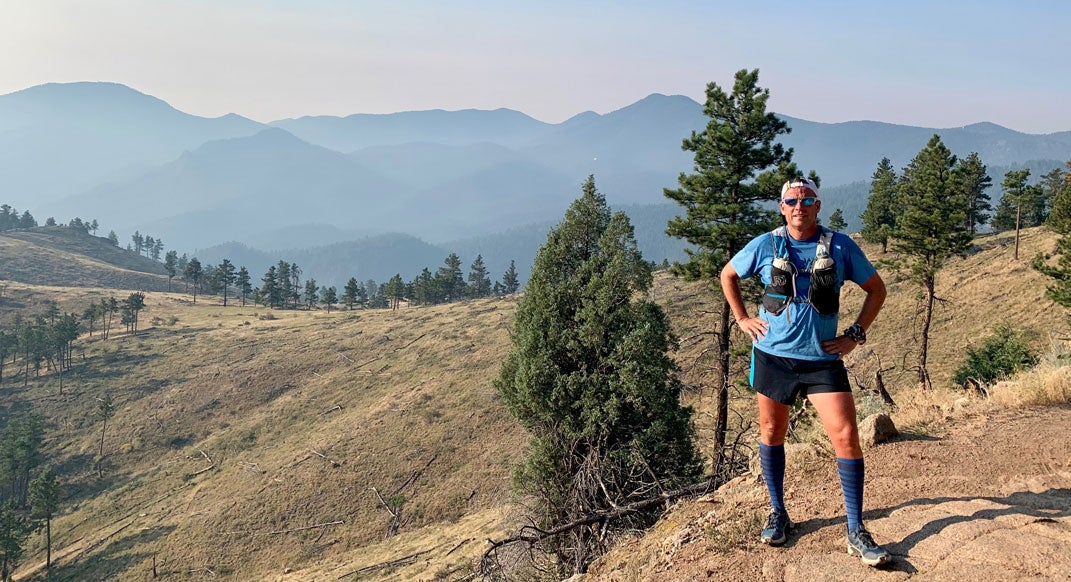TRAIL STOKE: Why SKTs — Slowest Known Times — Are Good For The Soul

I woke up one day last week feeling well-rested and a bit foot loose and fancy free.
I was eager to meet up with a morning trail running group that typically starts off slow but almost winds up revving up and then splintering as a handful of runners get after it off the front. They were running a 4.5-mile loop I’ve run dozens of times and often pretty quickly.
That was an exciting thought on this morning, because I was ready and eager to run fast.
Or so I thought.
Only I wasn’t.
And I didn’t.
Sometimes you feel good and feel like you have a spring in your step. And sometimes you actually do, with the ability to float and bound over the trails with ease, flying up the climbs, bounding down the descents, and not only for the early miles but deep into a run, too.
Those kinds of days make for amazing runs, because you don’t need to think or stress about anything, you just need to go with the flow. You feel like you can run forever, and even when you’re out of breath or start to fatigue, you can lean into that seemingly limitless energy even when you start to get tired.
When those days match up to your goals and expectations — on race day, when you’re targeting a Fastest Known Time (FKT) or, perhaps more applicable, when you’re shooting for a personal FKT or just interested in running fast — it is pure trail running bliss. Those are the moments we remember, what fuels our passion and what inspires us to keep doing it.
But, let’s be honest, we don’t feel that amazing every single day. At least I don’t. And probably not even on most days, although it also has a lot to do with my relative state of fitness and recent sleep patterns. Most days seem like it takes some effort to run that way, but that, of course, makes those other days all the more magical.
Sometimes your legs are decidedly not springy, even when you thought or hoped they would be. Instead they sometimes feel like they’re filled with sawdust or sand.
Sometimes you’re too fatigued to run fast, sometimes you’re not in the mood to run fast, sometimes you just can’t run fast.
I’m not at all trying promote a soft approach to training or running easy all the time, but just offering a reminder that certainly feels good to run easy sometimes and, yes, that it probably allows us to run faster when we really need to or want to. In both cases — running hard or easy — you can certainly lose yourself in the process and have a great experience.
That was me on this particular day. So when the pace of the group picked up, I let them go and immediately found myself running alone, watching them speed out of sight. And I was OK with that. In fact, I was more than OK.
I backed off the pace and just went with the flow, which isn’t something I regularly do when running with this group. Usually, I try to hang with the speedsters and, in rare moments, try to go off the front. But this time I didn’t try to force myself into another gear that just wasn’t there on that day. And I actually relished in the simple act of running and being.
And you know what? I had an amazing run. I watched the sun rise, felt my legs and feet engage with the steepness of the terrain, smelled the scent of the pine trees, listen to my breath, thought about my upcoming work day in a stress-free way and when it got really steep, I even walked a bit. I was eventually caught by two other runners who had fallen off the back early on — one I knew, one I had never met before — and we finished the loop at a stress-free, conversational pace, talking about life, politics, food and the coming winter.
There’s a natural instinct to want to run fast on the trails, if only for the simple reason that it’s a movement that’s meant to be faster than hiking. And that’s what gets all of the attention (and vanity), especially on social media — how fast we ran, how epic our adventures were, how much we smashed ourselves out on the trails.
I’m not at all trying promote a soft approach to training or running easy all the time, but just offering a reminder that certainly feels good to run easy sometimes and, yes, that it probably allows us to run faster when we really need to or want to. In both cases — running hard or easy — you can certainly lose yourself in the process and have a great experience.
But for me, at least, it’s easy to lose sight of the simple concept that the joy of running is all about just about putting one foot in front of the other at an easy to moderate pace, following the trail where it goes and immersing in the existential joy of moving yourself through the wild.
When we met up with the rest of the group back at the trailhead about 10 minutes after they finished the loop, there were signs that they had run hard. That was inspiring, and in that moment, I was motivated to come back and run with them again. But for that particular run, I was perfectly content with my Slowest Known Time.
Brian Metzler was the founding editor of Trail Runner and now serves as a contributing editor.